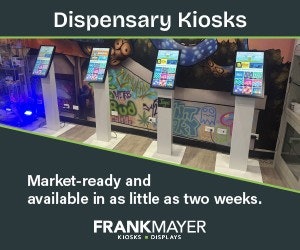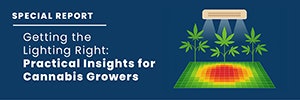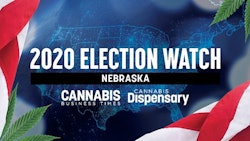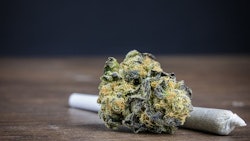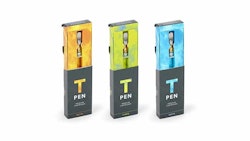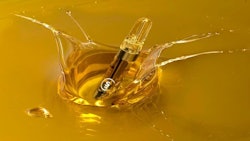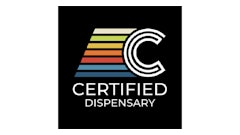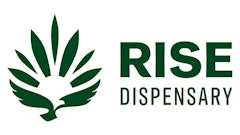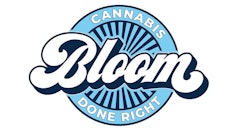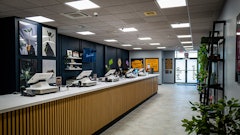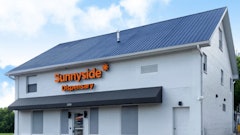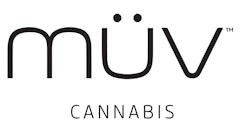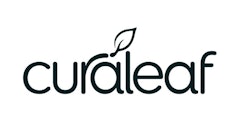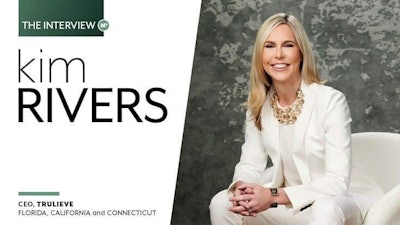
Trulieve, the multi-state, vertically integrated medical cannabis company headquartered in Florida, opened its 53rd retail location in Fort Pierce, Fla., on July 2.
It’s one of five Trulieve dispensaries to open its doors in Florida since during the coronavirus pandemic; and, amidst a time of widespread nationwide layoffs, Trulieve has hired more than 500 employees company-wide since mid-March. According to its website, Trulieve now owns 53% of market share in the state of Florida. The company reported more than $96 million in revenue in Q1 of this year, and the Florida Department of Health’s Office of Medical Marijuana Office (OMMU) reports that sales medical cannabis sales have increased since the COVID-19 crisis began.
The financial success of Trulieve, however, has not come without its challenges safely operating as an essential business in a state where coronavirus cases are rising rapidly. In this Q&A with Cannabis Dispensary, Trulieve CEO Kim Rivers shares what the company is doing to offer employees flexibility during this time; predictions of how the retail technologies quickly adapted during the pandemic will fare in a post-COVID world; as well as what this moment in history means for federal cannabis reform and adult-use legalization in Florida.
Editor’s note: This interview has been edited for length, style and clarity.
Cassie Neiden: What does a grand opening look like in the time of coronavirus?
Kim Rivers: We’ve been deemed essential in the markets that we operate in. And the state of Florida came out pretty early with that designation. Our regulator, which is the Department of Health, Office of Medical Marijuana Use has been wonderful to work with through this unprecedented time.
They’ve worked with us to ensure that we’re able to continue to serve the essential needs of our patients in making sure we’re not able to not only have uninterrupted service—but support us with additional approvals.
During COVID, we have done things a little bit differently throughout the organization. We are messaging to folks in that particular location, or the surrounding areas, that we will be opening on a certain day and encouraging patients to place their orders ahead of time so that they can take advantage of our quick pickup service or delivery on the day of the grand opening—so minimizing the number of folks who are in the lobbies at any given time, and making that interaction as short as possible—though, of course we love to interact with our patients.
Social distancing protocols and keeping folks safe is of course our No. 1 priority. We’ve seen an increase in utilization of pickup, that allows you to order online ahead of time, place your order, and then we actually text you when your order is ready. Not quite the crowded lobby, food truck-celebrations that we had pre-COVID, but we still find it important to move forward with those openings, and make sure that we are getting products to patients as conveniently as possible.
CN: Did anything change as far as the layout of the new stores, or workflow, with the new openings?
KR: We implemented very early on protocols such as temperature checks for all employees, limiting the number of registers that we have open so that employees and patients aren’t necessarily side-by-side during checkout. We implemented plexiglass screens in-between employees and patients and have always required masks for our employees and anyone entering our dispensaries. If someone has a specific situation where they cannot wear a mask, we’re happy to service them curbside from their vehicle. In addition, we have an increased sanitation. We’ve contracted with a professional cleaning service whose coming in and very regularly doing deep cleans of all of our dispensary facilities and throughout our entire operation. We’ve also added specific air filtration systems in all of our dispensaries.
We have a pretty generous leave of absence program if an employee has come in contact with someone who had tested positive for coronavirus, we’ve set procedures so that the employee is supported throughout the time when he or she will go and get tested and quarantined until those results came in.
Immediately, while we’re waiting for that employee’s test results to come in, we’ll track and trace and make sure we’re doing the same thing with any other employees that that particular person may have come in contact with.
Previously it would have been fine for folks to congregate in the break room or have the same lunch hour, or so forth, but we’re staggering those things and ensuring that folks can maintain social distancing as much as possible in the workplace.
"We literally went from about 25,000 calls in a week [in our call center] to about 65,000 calls. It was an incredible increase in volume pretty much overnight."
— Kim Rivers, CEO, Trulieve
CN: Communications-wise, how do you ensure that messaging is consistently conveyed throughout your entire operation, and how does that day-to-day communication with your team from top to bottom work?
KR: Overcommunication obviously in any type of crisis situation is of the utmost importance. Because we’re headquartered in Florida, we’re very used to disaster preparedness. We have a cross-functional team that does emergency planning for us and that has to do with hurricanes, which is a threat every year, and so we immediately convened that team in late February, early March. They sprung into action to ensure that not only protocols were put in place but that employees had full transparency as far as what we as a company were doing to support them. We communicate with all our employees via email. In addition, we have found that it’s very important that managers are directly communicating with employees. So in morning huddles that occur throughout the organization, COVID is a consistent topic and so we’ll make sure that during that morning huddle those specific points are being addressed.
Our human resources team has been working overtime to ensure that employees feel supported and there’s a number and a person that each group can reach out to. We have a centralized communication channel that in the event that an employee has a specific concern, i.e. they’ve been contacted by the Department of Health or realized they had contact with a positive COVID patient, they can communicate directly with the organization.
Being deemed an essential business pretty early on I think was a relief to many of our [employees] to ensure that they’d be able to continue employment during these uncertain times when so many other industries have had to unfortunately cut back. I think that our team is highly motivated to make sure that we’re open for our medical patients and continuing to service them because particularly in times like this when there’s increased stress and anxiety, when you think about the types of conditions that medical cannabis can be helpful with, I think our team takes that to heart.
.jpg?auto=format%2Ccompress&fit=max&q=70&w=400)
CN: How has new employee orientation and training been like during this time?
KR: We have a hybrid intake process, so there’s a portion of it that’s virtual and then there’s the portion of it of course that is more hands-on. Certainly we’ve been cognizant and a little bit more cautious of close interaction but I would say that our onboarding process has remained in place because it is important that folks are being trained appropriately. Now, of those 500 positions, those are not all patient-facing positions, some of those are maybe call center, for example. We did move our call center so we’re able to work from home. That training is done virtually and also via phone call or via video chat. We have moved any nonessential, in-person meetings to a video conference format, even our executive team meetings. Although, we increased the frequency during COVID, keeping an eye on team morale, making sure that employees continue to feel connected to the business.
RELATED: How COVID-19 Is Impacting Public Cannabis Companies
CN: What would you say was the company’s biggest retail challenge while quickly adding or expanding new services?
KR: We had a number of technology initiatives in the pipeline, and as a result of COVID, it became very apparent that we needed to accelerate those and implement them very quickly. For example, pre-COVID, 80% of our business was walk-in and 15% was pickup, with approximately 5% delivery. Those are March statistics. In April, it dramatically shifted to only 20% walk-in, an increase from 15% to 60% percent of pickup and then an increase from 5% to 20% delivery. So in order to make sure that pickup could be serviced, we needed to make sure that we had the technology built into the website, as well as the texting platform, as well as at the dispensary, to let patients know, ‘Yes, come on in, we’ve got your order ready for you.’ What we also found is that patients really wanted to connect with us because they were unsure in terms of, ‘OK, can I go in? Do I need to order for delivery? What are my options?’ A lot of folks had never done pickup.
We literally went from about 25,000 calls in a week [in our call center] to about 65,000 calls. It was an incredible increase in volume pretty much overnight. And so again, [we were] bringing in technology to help us solve for that by how we were queueing patients and [implementing] phone trees. Our IT team did a fantastic job coming in and increasing the speed at which we could adequately service those callers.
Acceleration of technology was certainly an opportunity but it also, like any technology implementation, was a little challenging.
CN: Do you anticipate those trends in the new ways patients have accessed cannabis to remain for a time, or do you think once the COVID-era comes to an end people will go back to the previous model of mostly walk-ins?
KR: We are seeing the folks who have experienced pickup like it. It’s very convenient. About half of our business now is being done through pickup. I think that will likely continue. With delivery, it’s interesting. When we think about groceries for example, a lot of folks over the last three months have experienced grocery delivery for the first time, so I think the delivery will be a little higher than it was previously. Although, I think that [may change] with folks going back to work and not being at home all day like we were for a period of time [because] with medical cannabis, you have to be there when the delivery is made. It’s a person-to-person transaction, you have to show your ID. We’re not at a point yet where we’re able to just leave a package for you if you’re not home.
CN: Have you found that patients were bulking up on product at the beginning of the coronavirus pandemic—and if so, how has that trend perhaps leveled out, if at all, over the past couple months?
KR: I think that our markets are a little different than some other places, certainly as what I’ve seen from trend reporting in the West Coast. We saw increases in basket size but we also saw increases in frequency, so we certainly did not see pantry-loading with then a precipitous drop-off in repeat. We saw basket sizes increase from $120 up to $127 per patient, with visits remaining constantly at approximately 2.7 visits a month for an active patient. So that repeat number, which we look at pretty carefully, never wavered during COVID, which speaks to overall trends of flat-out increased consumption during that period. At this point, we’re seeing the basket size kind of normalize, so it’s back down around that $120. But we’re continuing to see patient visits pick up a little bit with people out and about again, to now about 2.8 visits per month.
CN: From your perspective, what can the cannabis industry take away as an essential business in this historic moment? How does that play into how you set your goals for the second half of 2020 and beyond?
KR: It’s pretty incredible to think that as an industry, although we’re federally not recognized as an industry, and in some cases, such as under the tax code, penalized, here we are as an essential business at a state level. It’s a very interesting juxtaposition and one that we will continue, as an industry, to remind federal regulators of. When we think about how important remaining open and having medicine available for folks is, [we can] have that conversation in a meaningful way when we’re talking to legislators, congressmen and women, folks from Treasury and the Executive Branch. And particularly when we think about advocating for SAFE Banking to pass at the federal level, and how kind of silly it is. Patients are required to interact with us using cash, which is known to be a pretty dirty substance, right? We’re forcing them to go to an ATM or to go their bank. We’re not able to participate in the normal business ecosystem within this country because of the lack of action from the federal government. It really does provide a sharp contrast and certainly an opportunity for the industry to push forward that conversation at the federal level.
CN: What about at the state level—do you think that this is going to kind of push the needle in a new way for adult-use legalization in Florida?
KR: The true impact of economic impact of COVID is still being determined by state governments. It’s going to vary from state to state with respect to the negative impact on the budget and projected tax revenues. We will continue to raise our hand and offer to be part of that solution. We’re proving that we can be a real part of that solution where we can be an economic engine and a source of solutions. When you think back to alcohol and how and why [alcohol] Prohibition ended—Prohibition was abolished at the end of the Great Depression [when a] new industry could serve as a tax generation solution. I really think there are a lot of parallels. It would be unfortunate if we had to get that far along in a recession prior to having the ability to step up and contribute, but I certainly think that we as an industry would be poised to do so. In Florida as an example, because it is medical cannabis currently, it’s not taxed at all, and therefore there is no revenue that’s recognized by the state government, aside from medical card renewals or issuances of medical. In terms of outlook, I think it’s a little early to make any predictions at least for Florida, but I think we will likely see a renewed and accelerated focus on moving forward with those plans so that they can realize the benefits of that tax income.



